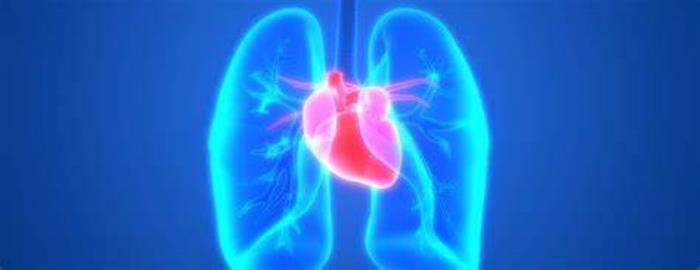The long-term outlook after lung transplant surgery varies depending on several factors, including the patient’s overall health, the success of the transplant, and adherence to post-operative care. While lung transplantation can significantly improve quality of life and extend life expectancy, it requires ongoing monitoring and management of potential complications, such as organ rejection and infection, to ensure optimal graft function over the years.
Survival Rates and Life Expectancy Post-Lung Transplant
Survival rates and life expectancy after lung transplant have steadily improved, with the average patient living 5-10 years after surgery. However, survival can vary based on factors like age, underlying disease, donor-recipient matching, and post-transplant care. Advancements in immunosuppressive therapy, monitoring techniques, and surgical procedures have contributed to better outcomes and longer post-transplant survival.
Factors That Influence Long-Term Prognosis in Lung Transplant Recipients
Several factors influence the long-term prognosis of lung transplant recipients, including the cause of the original lung disease, overall health before surgery, the presence of co-morbid conditions (such as heart disease), and adherence to post-transplant care. Additionally, the quality of the donor lungs and the timing of the transplant play a significant role in long-term outcomes.

Common Challenges in Maintaining Graft Function Over Time
Maintaining graft function over time can be challenging due to the risk of organ rejection, infections, and complications like Chronic Lung Allograft Dysfunction (CLAD). Rejection episodes, even if managed successfully, can contribute to gradual deterioration in lung function. Infections, often due to immunosuppressive drugs, are another risk that can compromise graft survival.
How Immunosuppressive Therapy Impacts Long-Term Outcomes
Immunosuppressive therapy, essential for preventing organ rejection, significantly impacts long-term outcomes in lung transplant recipients. While it helps prevent rejection, it also increases the risk of infections, cancers, and other side effects. Balancing immunosuppression to prevent rejection while minimizing risks is a delicate process that requires constant monitoring and adjustment.
Monitoring for Chronic Lung Allograft Dysfunction (CLAD)
Chronic Lung Allograft Dysfunction (CLAD) is a significant long-term complication of lung transplantation, marked by a gradual decline in lung function. CLAD can present as bronchiolitis obliterans syndrome or restrictive allograft syndrome, and monitoring for its signs through pulmonary function tests and imaging is critical. Early detection and intervention can help manage symptoms and slow disease progression.
Strategies to Prevent and Manage Organ Rejection
Preventing and managing organ rejection involves a combination of immunosuppressive therapy, close monitoring, and early intervention. Regular testing, including blood work and lung function tests, helps detect early signs of rejection. If rejection occurs, adjustments in medication or additional treatments may be required to prevent further damage to the transplanted lung. Adhering to prescribed medications and follow-up visits is crucial for preventing long-term graft loss.
The Role of Regular Follow-Up and Health Monitoring
Regular follow-up visits and continuous health monitoring are critical for lung transplant recipients to ensure long-term success. These visits help detect early signs of rejection, infections, or other complications, allowing for timely interventions. Routine tests like pulmonary function tests, chest imaging, and biopsies are key in assessing graft function and overall health. Close monitoring also allows healthcare providers to adjust medications, manage comorbidities, and support lifestyle modifications for improved long-term outcomes.
Managing Infections for Better Long-Term Prognosis
Infections pose a significant risk to lung transplant recipients due to the immunosuppressive medications required to prevent organ rejection. Effective infection management involves the use of prophylactic antibiotics, antifungals, and antivirals, along with strict hygiene practices and regular screenings. Early detection of infections through blood tests, bronchoscopy, and imaging ensures prompt treatment, improving long-term prognosis and minimizing complications.

Lifestyle Changes to Improve Survival Post-Transplant
Adopting a healthy lifestyle after lung transplant surgery is essential for improving long-term survival. Key changes include maintaining a balanced diet, avoiding smoking and excessive alcohol use, staying physically active, and managing stress. These changes help strengthen the immune system, improve lung function, and reduce the risk of infections or other post-transplant complications. Psychological and social support also play a critical role in fostering a positive mindset and adherence to health guidelines.
Importance of Exercise and Physical Therapy in Long-Term Recovery
Exercise and physical therapy are crucial components of long-term recovery for lung transplant recipients. Cardiovascular exercise, strength training, and mobility-focused activities improve lung function, increase stamina, and reduce the risk of complications like muscle atrophy and blood clots. Regular physical therapy also enhances overall quality of life by promoting independence and supporting mental well-being, ensuring continued progress after surgery.
Psychological Well-Being and Its Effect on Long-Term Outcomes
Psychological health significantly impacts the long-term success of lung transplants. Anxiety, depression, and post-transplant stress can negatively affect recovery by impairing immune function, reducing adherence to medical regimens, and lowering quality of life. Psychological support through counseling, stress management techniques, and peer support groups helps patients cope with the emotional challenges of post-transplant life, improving their overall prognosis.
How Nutrition Supports Long-Term Health After Lung Transplant
Proper nutrition is vital for maintaining optimal health after a lung transplant. A balanced diet rich in essential nutrients supports immune function, promotes wound healing, and helps manage side effects from medications such as weight gain or diabetes. Collaborating with dietitians ensures personalized nutrition plans that align with each patient’s specific health needs and recovery goals, contributing to long-term success and quality of life.
Advances in Medical Technology Improving Long-Term Survival
Advances in medical technology have greatly improved the long-term survival rates of lung transplant recipients. Developments in imaging, such as high-resolution CT scans and bronchoscopy, enable more accurate monitoring of lung function and early detection of complications. Additionally, innovations in immunosuppressive drug management, wearable health devices, and telemedicine have enhanced patient care, ensuring better outcomes and quality of life.
Addressing Comorbidities in Post-Transplant Care
Managing comorbidities such as diabetes, hypertension, and osteoporosis is an integral part of post-transplant care. These conditions are common in lung transplant recipients due to the use of immunosuppressive medications. A multidisciplinary approach, involving pulmonologists, endocrinologists, cardiologists, and dietitians, ensures that comorbidities are well-managed and do not interfere with the transplanted lung's function or overall health.
Understanding Quality of Life Improvements After Lung Transplant
Lung transplant recipients often experience significant improvements in their quality of life, with enhanced breathing, increased mobility, and the ability to resume normal activities. This improvement is particularly noticeable for patients who previously struggled with severe respiratory symptoms, allowing them to engage in activities like exercise, travel, and social events. Continued follow-up care, lifestyle changes, and mental health support contribute to sustained improvements in quality of life.
Long-Term Effects of Immunosuppressive Drugs on Overall Health
While immunosuppressive drugs are essential for preventing organ rejection, they can have long-term effects on overall health, such as increasing the risk of infections, osteoporosis, diabetes, and kidney issues. Regular monitoring and adjustments to medication regimens help mitigate these risks. Patients are also encouraged to follow healthy lifestyle practices, including proper nutrition and exercise, to counterbalance these effects and maintain overall well-being.
Patient Stories: Thriving Years After Lung Transplant Surgery
Many lung transplant recipients go on to lead fulfilling lives years after surgery. Stories of patients resuming normal activities, achieving career goals, and experiencing improved physical health highlight the transformative impact of a successful transplant. These narratives not only offer hope but also emphasize the importance of ongoing care, lifestyle changes, and emotional support in achieving long-term success.
Innovations in Post-Transplant Care for Better Prognosis
Innovations in post-transplant care, such as personalized medicine, advanced diagnostic tools, and improved immunosuppressive regimens, have enhanced the prognosis for lung transplant recipients. The use of gene therapy and targeted drug therapies holds promise for minimizing complications and improving long-term survival. Ongoing research continues to focus on improving rejection management, infection prevention, and graft longevity.
The Role of Lung Transplant in Cystic Fibrosis Management
Understand the role of lung transplant in cystic fibrosis management. This article explores how lung transplantation is used to treat severe cases of cystic fibrosis when the lungs are no longer functioning effectively, offering new hope for patients with advanced respiratory issues.
Future Prospects in Extending Lung Transplant Longevity
The future of lung transplantation looks promising with advancements in gene therapy, artificial intelligence, and organ preservation techniques. Gene therapy offers the potential to modify the immune system or correct underlying genetic conditions, reducing dependence on immunosuppressive drugs. Additionally, improved organ preservation methods may expand the donor pool, providing more patients with access to life-saving transplants.
Best Lung Transplant in India
The Best Lung Transplant in India offers a vital treatment option for patients with end-stage lung diseases, combining advanced surgical expertise with comprehensive post-transplant care.
Best Lung Transplant Hospitals in India
The Best Lung Transplant Hospitals in India are equipped with cutting-edge technology and experienced transplant teams, ensuring seamless care and improved outcomes for patients.
Lung Transplant Cost in India
The Lung Transplant Cost in India is structured to provide affordability while maintaining high standards of medical care and long-term support for patients.
Best Lung Transplant Surgeons in India
The Best Lung Transplant Surgeons in India are highly skilled in handling complex transplant cases, offering precise surgical interventions and personalized patient care for successful recoveries.
FAQ Section
1. What is the average life expectancy after a lung transplant?
The average life expectancy after a lung transplant is typically 8 to 10 years, though many patients live longer with proper care and follow-up.
2. What factors affect long-term survival after lung transplant surgery?
Factors include adherence to medications, management of infections and rejection, overall physical and psychological health, and regular follow-up care.
3. How is chronic rejection managed in lung transplant recipients?
Chronic rejection is managed through adjustments in immunosuppressive therapy, close monitoring for signs of deterioration, and potentially using newer therapies to address rejection.
4. What role does lifestyle play in long-term transplant success?
Lifestyle changes, such as maintaining a healthy diet, regular exercise, and stress management, play a crucial role in reducing the risk of complications and promoting long-term health after lung transplant.
5. How often should lung transplant recipients have follow-up visits?
Lung transplant recipients typically have follow-up visits every 3 to 6 months, though the frequency may increase if there are concerns about rejection, infections, or other complications.